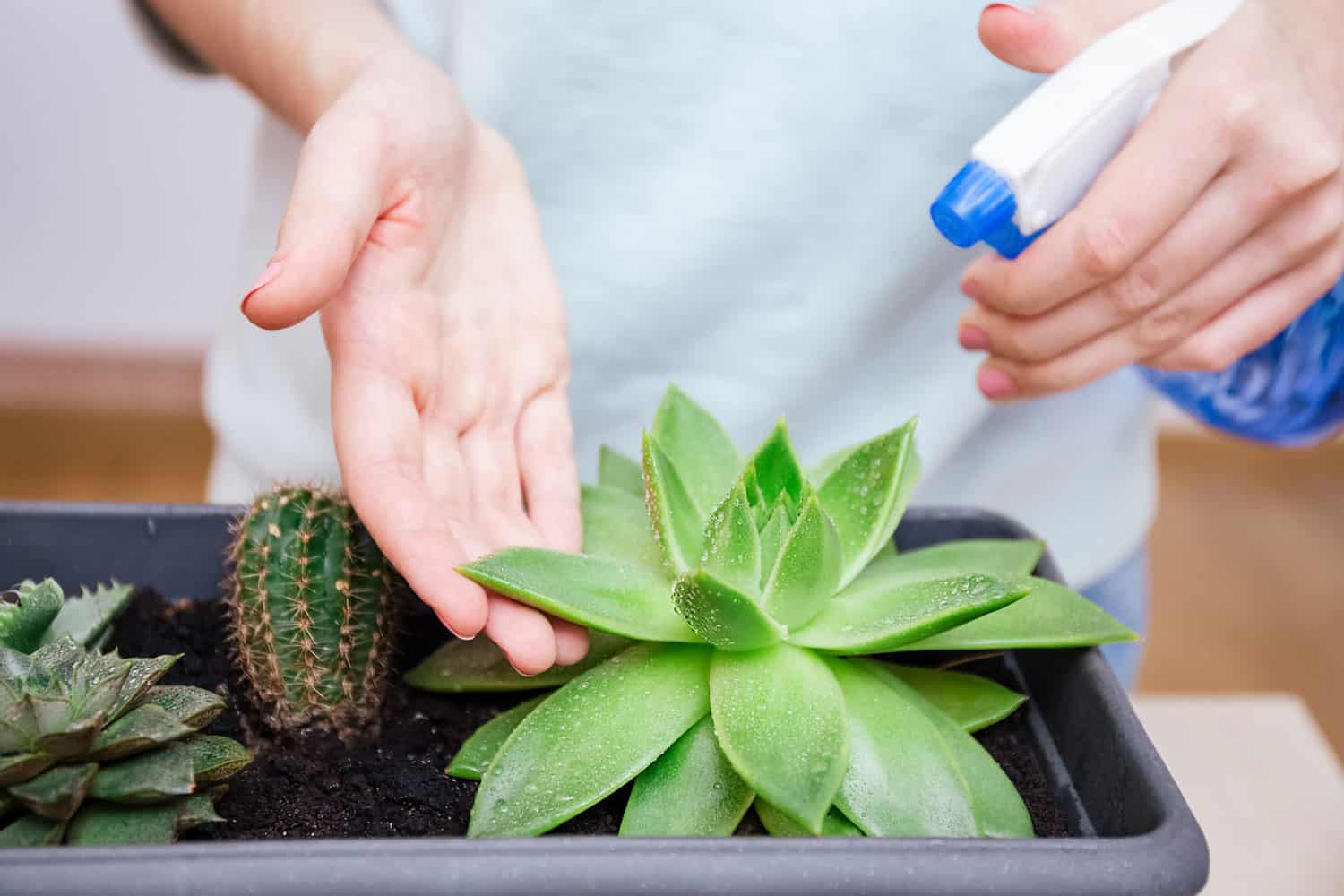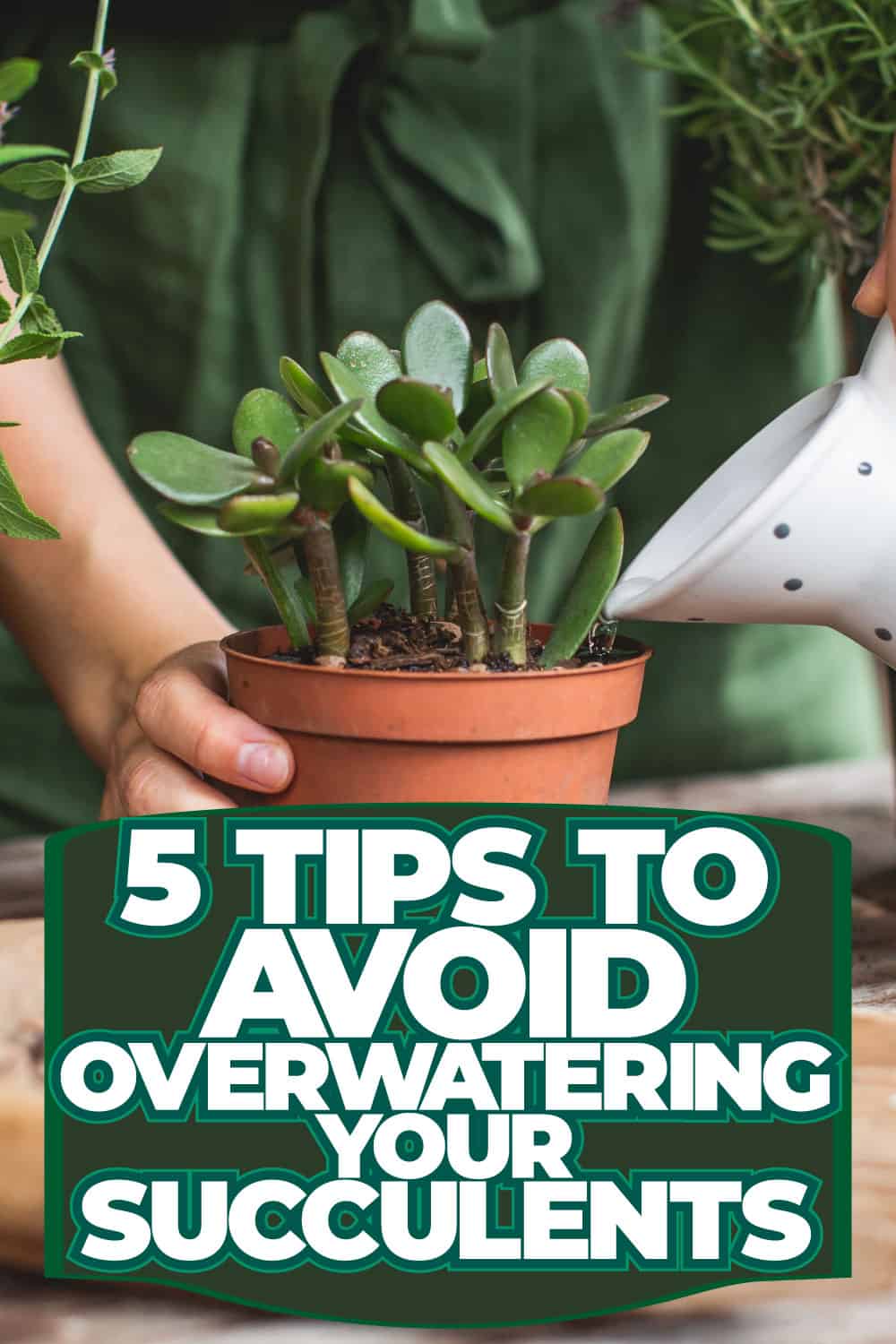Struggling to keep your succulents thriving, only to find them wilting or waterlogged?
You're facing a challenge common among many succulent enthusiasts: overwatering.

This often leads to root rot and other disheartening issues. However, the right knowledge and approach can turn your situation around.
In this article, we offer five essential tips that will help you avoid overwatering your succulents, ensuring their health and vibrancy.
Tip 1: Recognize Signs of Overwatering
Pay close attention to these specific symptoms of overwatering to catch the problem early.
Spotting Limp and Translucent Leaves
When you see your succulent's leaves turning limp and translucent, it's a classic indicator of too much water.
Succulent leaves should be plump and firm, not soft or squishy. If they look like they're about to burst, you've likely gone overboard with watering.
Noticing Soil Moisture and Drainage Issues
Examine the soil around your succulents. Good succulent soil should be quick to dry. If you find the soil is consistently wet or your pot doesn't drain well, your watering habits may be to blame.
Ensure your pot has adequate drainage holes to prevent water from accumulating at the bottom.
Identifying Mold or Algae Growth
Keep an eye out for unpleasant guests such as mold or algae on the soil surface or pot edges.
These thrive in moist conditions and can signify that it's time to let the soil dry out more between waterings.
If the scent of dirt has turned musty or you spot any green film, it's an alert to scale back on water.
Tip 2: Apply Succulent Watering Techniques
Each succulent has unique needs, but overwatering is a common pitfall to avoid.
Your succulents are not all created equal. Some might bask in dry conditions, while others need a bit more hydration.
Check your plant’s specific variety to understand exactly what it craves, considering factors like humidity, season, and sunlight.
It’s like getting to know a new friend – each one has their likes and dislikes!
Here are some watering techniques to learn:
1. Soak and Dry Method
The soak and dry method is the gold standard for succulent watering.
Give your plant a good drink, allowing water to run out of the drainage holes, then wait until the soil is completely dry before watering again.
Your succulent roots like to drink up and then dry out; they're not fans of soggy feet.
An easy way to check? Stick your finger about an inch into the soil – if it’s dry, it’s time for a soak.
2. Bottom Watering Approach
Bottom watering is a pro move for your moisture-sensitive plants.
Simply place your succulent pot in a tray of water and let it sip from the bottom up for about 30 minutes.
This encourages the roots to grow downward and helps avoid over-moistening the soil at the top, which can lead to decay.
Remember to remove any excess water from the tray to keep things tidy.
Tip 3: Seasonal Considerations for Watering
When caring for your succulents, you need to account for seasonal changes in light and temperature, as these factors significantly affect your plant's watering needs.
Adjusting to the Dormant Period
In the winter, many succulents enter a dormant period where their growth slows down significantly.
During this time, your plants won't need as much water. Before you water, check the soil moisture. If it's still damp from the last watering, hold off on adding more water.
This is because overwatering during dormancy can lead to root rot since the plants aren't actively using the water for growth.
Adapting to Active Growing Seasons
Come spring and summer, most succulents enter their active growing seasons. They'll need more frequent watering to support their rapid growth.
A good rule of thumb is to offer water once the top inch of the soil has dried out.
Increase your watering frequency gradually as temperature rises but always be mindful to avoid watering if rain has naturally dampened the soil recently.
Remember that well-hydrated succulents are more resilient to the heat, especially during peak summer months.
Read here for more succulent care tips beyond watering issues: 10 Troubleshooting Tips for Succulents That Aren’t Thriving
Tip 4: Pot Selection and Soil Composition
Getting the pot and soil right is half the battle when it comes to cultivating healthy succulents.
Choose a pot material that complements your succulent's needs and a soil mix that provides the perfect balance of drainage and nutrient retention.
Choosing the Right Pot Material
When you're picking a pot for your succulents, breathability and drainage are your guiding stars.
Terra cotta and ceramic pots are champions at this because they are porous and allow air and moisture to pass through.
This helps prevent water from hanging around too long, which can spell disaster for your plant's roots.
On the flip side, plastic pots might retain moisture a tad too much. So, if you go plastic, make sure those drainage holes are clear and working overtime.
Mixing the Perfect Succulent Soil
Your succulents crave a mix that drains well--think drainage is the name of the game here.
To hit the nail on the head, use a combination like three parts potting soil, two parts sand, and one part perlite or pumice.
This concoction allows water to zip through the soil, keeping your succulent's feet from getting soggy.
Remember, the best potting soil for succulents isn't the standard stuff you'd use for most houseplants; it's a bit more gritty to hug those roots just right.
Tip 5: Monitoring and Adjusting Watering Habits
Getting the watering right for your succulents is a balancing act. Pay close attention to the moisture levels and adapt your watering schedule accordingly.
Keeping a Watering Schedule
First things first: mark your calendar for watering days to maintain a consistent routine.
Succulents thrive on a regular schedule, but beware of a one-size-fits-all approach.
Instead, tailor the frequency to your specific plant's needs, which can vary depending on the species and its growing conditions.
Checking the soil's dryness before proceeding is a good practice. If the top inch of the soil is dry, it's time to water.
Adapting Watering To Seasonal Shifts
Your succulents are at the mercy of their environment. When the seasons change or you crank up that heater, you'll need to adjust your watering habits.
In hotter temperatures, they might need a drink more often. But when it's cool and cloudy, they may need less.
Always stick your finger in the soil or use a moisture meter to double-check if they're really thirsty.
And if they're planted in an outdoor environment, you might wonder: Can Succulents Die From Too Much Rain?
Less is More in Succulent Watering
Succulents bring a unique beauty to your home or garden, and by mastering these simple yet effective watering techniques, you can ensure their longevity and health.
Remember, when it comes to succulent care, less is often more! Happy gardening!

